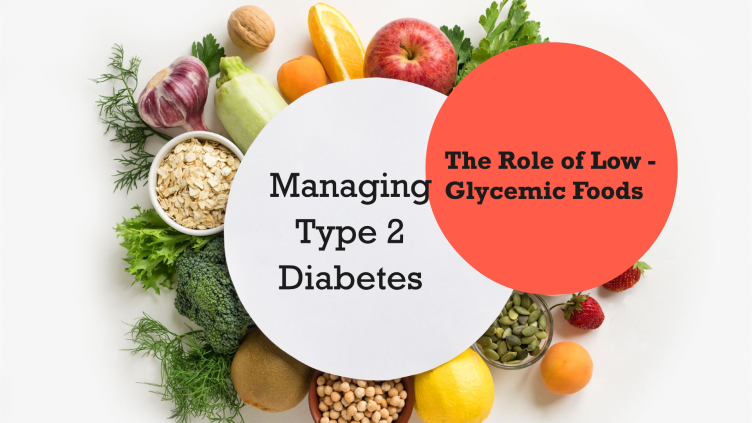The Role of Low-Glycemic Foods in Managing Type 2 Diabetes
Type 2 diabetes is a chronic condition where the body struggles to use insulin effectively, leading to high blood sugar levels. Managing these levels is crucial to avoid complications like heart disease, nerve damage, and kidney problems. One effective dietary approach is to include low-glycemic index (GI) foods in your daily meals. This article explains how low-GI foods can help manage Type 2 diabetes and improve overall health.
Understanding the Glycemic Index
The glycemic index ranks carbohydrates based on how they affect blood sugar levels. Foods are rated on a scale of 0 to 100:
- Low-GI foods (55 or less): These cause a slow and steady rise in blood sugar.
- Medium-GI foods (56-69): These cause a moderate increase in blood sugar.
- High-GI foods (70 and above): These cause a rapid spike in blood sugar levels.
Low-GI foods are digested and absorbed more slowly, providing a steady release of glucose into the bloodstream. This makes them particularly beneficial for people with Type 2 diabetes.
Benefits of Low-Glycemic Foods for Type 2 Diabetes Management
- Improved Blood Sugar Control: Low-GI foods help maintain stable blood glucose levels by minimizing spikes after meals. This reduces the workload on the pancreas and helps prevent insulin resistance from worsening.
- Better Weight Management: Weight control is essential in managing Type 2 diabetes. Low-GI foods, such as whole grains, legumes, and non-starchy vegetables, promote fullness and reduce hunger, helping control calorie intake and achieve a healthy weight.
- Reduced Risk of Cardiovascular Complications: Low-GI foods are associated with improved lipid profiles, such as lower LDL (“bad”) cholesterol and higher HDL (“good”) cholesterol. This reduces the risk of heart disease, a common complication in people with diabetes.
- Enhanced Insulin Sensitivity: Diets rich in low-GI foods improve the body’s response to insulin, making glucose uptake by cells more efficient. This is particularly important in reversing early-stage insulin resistance.
- Prevention of Hypoglycemia: For individuals on glucose-lowering medications, low-GI foods can help prevent episodes of hypoglycemia by providing a steady glucose supply.
Examples of Low-Glycemic Foods
- Whole Grains: Quinoa, barley, and steel-cut oats
- Legumes: Lentils, chickpeas, and black beans
- Fruits: Apples, oranges, berries, and cherries
- Vegetables: Broccoli, spinach, cauliflower, and zucchini
- Nuts and Seeds: Almonds, walnuts, chia seeds, and flaxseeds
- Dairy: Greek yogurt and milk (unsweetened)
Practical Tips for Incorporating Low-GI Foods
- Swap High-GI Foods for Low-GI Alternatives: Replace white rice with brown rice or quinoa, and choose whole-grain bread instead of white bread.
- Combine Low-GI Foods with Protein and Healthy Fats: Adding lean protein or healthy fats to meals can further reduce the glycemic impact of the food.
- Monitor Portion Sizes: Even low-GI foods can contribute to elevated blood sugar levels if consumed in large quantities. Practice portion control to maintain optimal blood sugar levels.
- Plan Balanced Meals: Aim for a mix of low-GI carbohydrates, proteins, and fats in every meal to achieve sustained energy and blood sugar control.
Conclusion
Incorporating low-glycemic foods into your diet is a powerful strategy for managing Type 2 diabetes. By promoting stable blood sugar levels, enhancing insulin sensitivity, and reducing the risk of complications, these foods can significantly improve quality of life for individuals with diabetes. Combined with regular physical activity and appropriate medical management, a low-GI diet can be a cornerstone of effective diabetes care.

